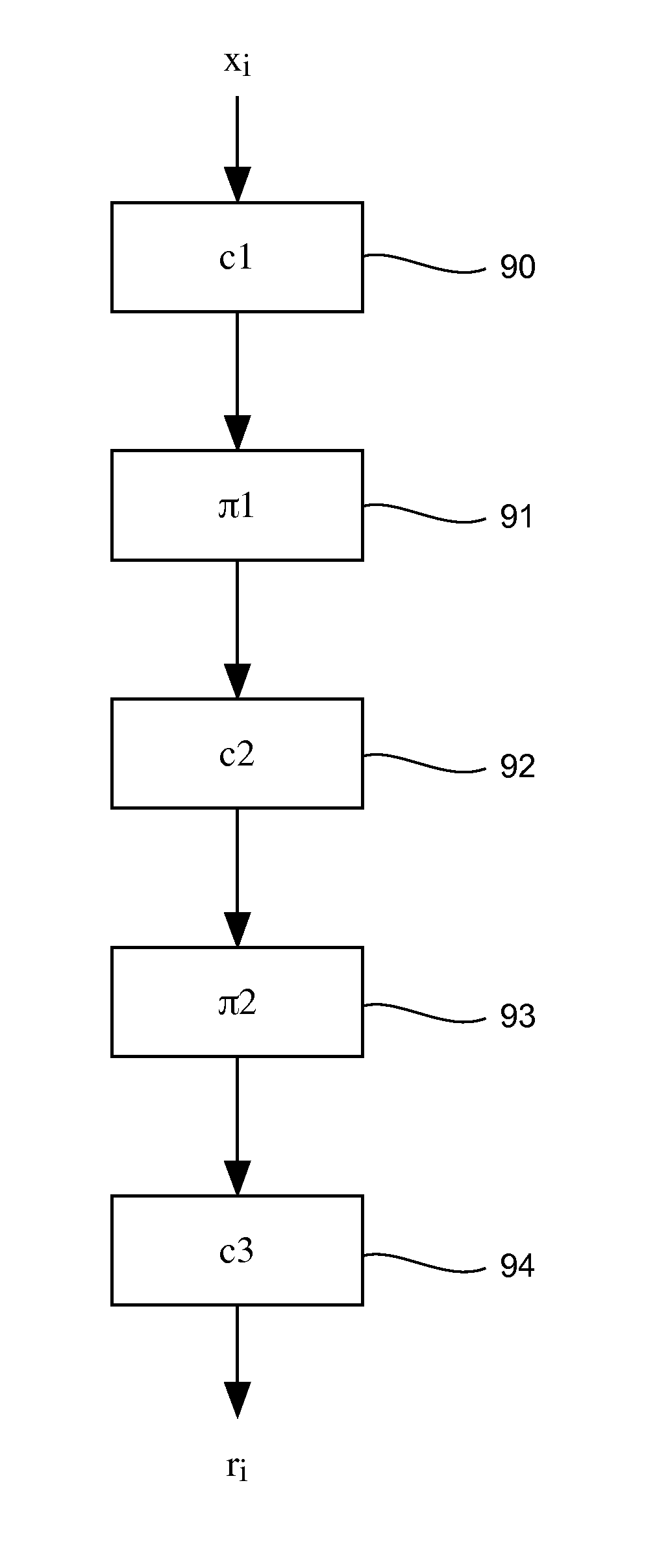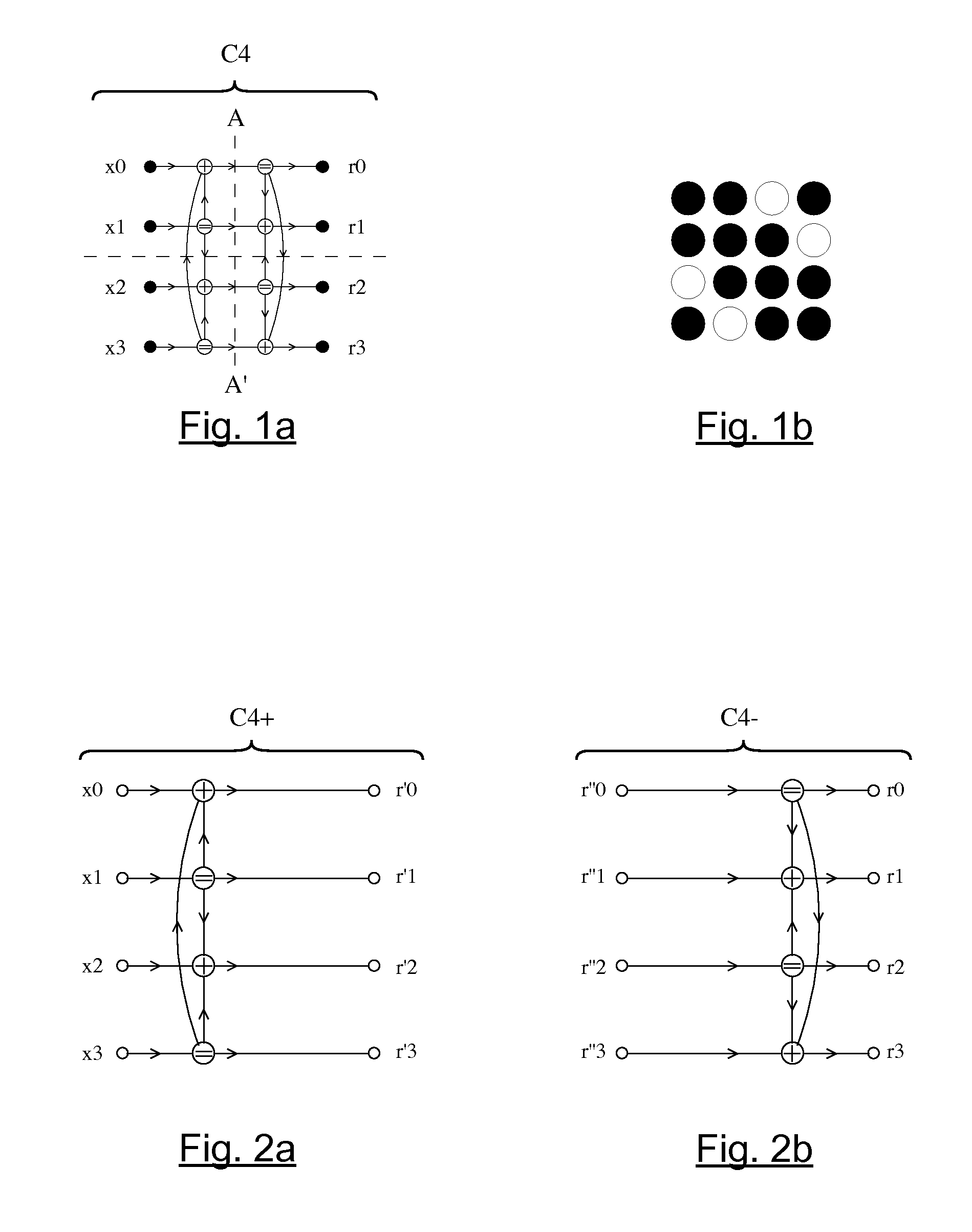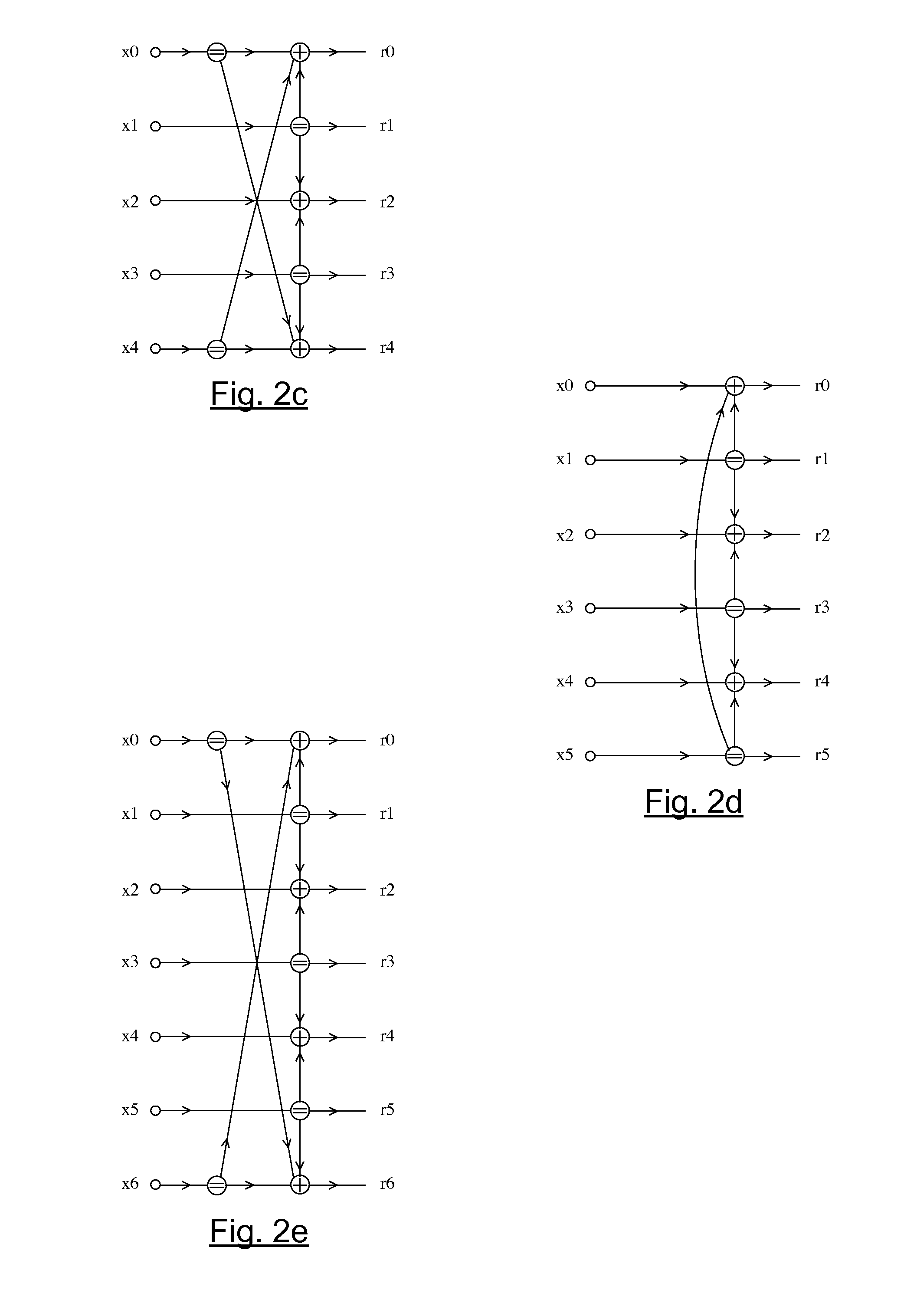Method and device for flexible error correction encoding and corresponding computer program
a technology of error correction and encoding, applied in the field of error correction codes, can solve the problems of more difficult to deal with the problem of optimizing error correction codes, the minimum distance dsub>min /sub>is not optimal for these lengths n and k, etc., and achieve the effect of reducing complexity
- Summary
- Abstract
- Description
- Claims
- Application Information
AI Technical Summary
Benefits of technology
Problems solved by technology
Method used
Image
Examples
first embodiment
3. Description of a First Embodiment
[0152]Referring now to FIGS. 3a and 3b, we present a first embodiment of the encoding device according to the invention.
[0153]FIG. 3a illustrates the structure of an encoder according to an embodiment of the invention taking pieces of source data (x0, x1, x2 . . . x11) at input and delivering pieces of redundancy data (r0, r1, r2 . . . r11) at output.
[0154]These pieces of redundancy data can then be used, in combination with the source data, to form a code word.
[0155]The encoder thus made has three encoding stages cA, cB and cC, and two permutation stages π0. Each encoding stage has three basic encoding modules: (A0, A1, A2) for the first encoding stage cA, (B0, B1, B2) for the intermediate encoding stage cB and (C0, C1, C2) for the last encoding stage cC.
[0156]The numbers indicated at input and output of the permutation stages nO define the position of the symbols at input at a permutation stage and their corresponding position at output.
[0157]Ac...
second embodiment
4. Description of a Second Embodiment
[0165]Referring now to FIGS. 4a and 4b, we present a second embodiment of the encoding device according to the invention.
[0166]FIG. 4a illustrates an encoder according to an embodiment of the invention taking the pieces of data (x0, x1, x2 . . . x11 at input) and delivering the pieces of redundancy data (r0, r1, r2 r11) at output. Again, these pieces of redundant data can be used in combination with the source data to form a code word.
[0167]The encoder thus made includes three encoding stages cA, cB et cC, and two permutation stages π0. Each encoding stage has three basic encoding modules: the first encoding stage cA implements three Hamming left half-codes C4+ (A0, A1, A2), the intermediate encoding stage cB implements two compact Hamming codes C4 (B0, B2) and one identity code Id4, the last encoding stage cC implements three Hamming right half-codes C4− (C0, C1, C2).
[0168]As in the embodiment described here above, the permutations π0 used are 4...
third embodiment
5. Description of a Third Embodiment
[0179]Referring now to FIGS. 5a and 5b, we present a third embodiment of the encoding device according to the invention.
[0180]FIG. 5a illustrates an encoder of this kind according to an embodiment of the invention, taking the pieces of data (x0, x1, x2 . . . x15) at input and delivering the pieces of redundancy data (r0, r1, r2 . . . r15) at output.
[0181]The encoder thus made has three encoding stages cA, cB and cC, each comprising four basic encoding modules (A0, A1, A2, A3), (B0, B1, B2, B3) and (C0, C1, C2, C3), each implementing a compact Hamming code C4, and two permutation stages π0.
[0182]This encoder implements the same 4-cyclic type permutation pattern π0 as the one described in the first embodiment, i.e. a 4-cyclic type permutation with a parameter Δ=1.
[0183]The length of this code is equal to 32, i.e. 4 / 3 of the length of “simplified” Cortex-Golay code C1(24, 12, 8) described here above, and the minimum distance dmin of this code is iden...
PUM
 Login to View More
Login to View More Abstract
Description
Claims
Application Information
 Login to View More
Login to View More - R&D
- Intellectual Property
- Life Sciences
- Materials
- Tech Scout
- Unparalleled Data Quality
- Higher Quality Content
- 60% Fewer Hallucinations
Browse by: Latest US Patents, China's latest patents, Technical Efficacy Thesaurus, Application Domain, Technology Topic, Popular Technical Reports.
© 2025 PatSnap. All rights reserved.Legal|Privacy policy|Modern Slavery Act Transparency Statement|Sitemap|About US| Contact US: help@patsnap.com



